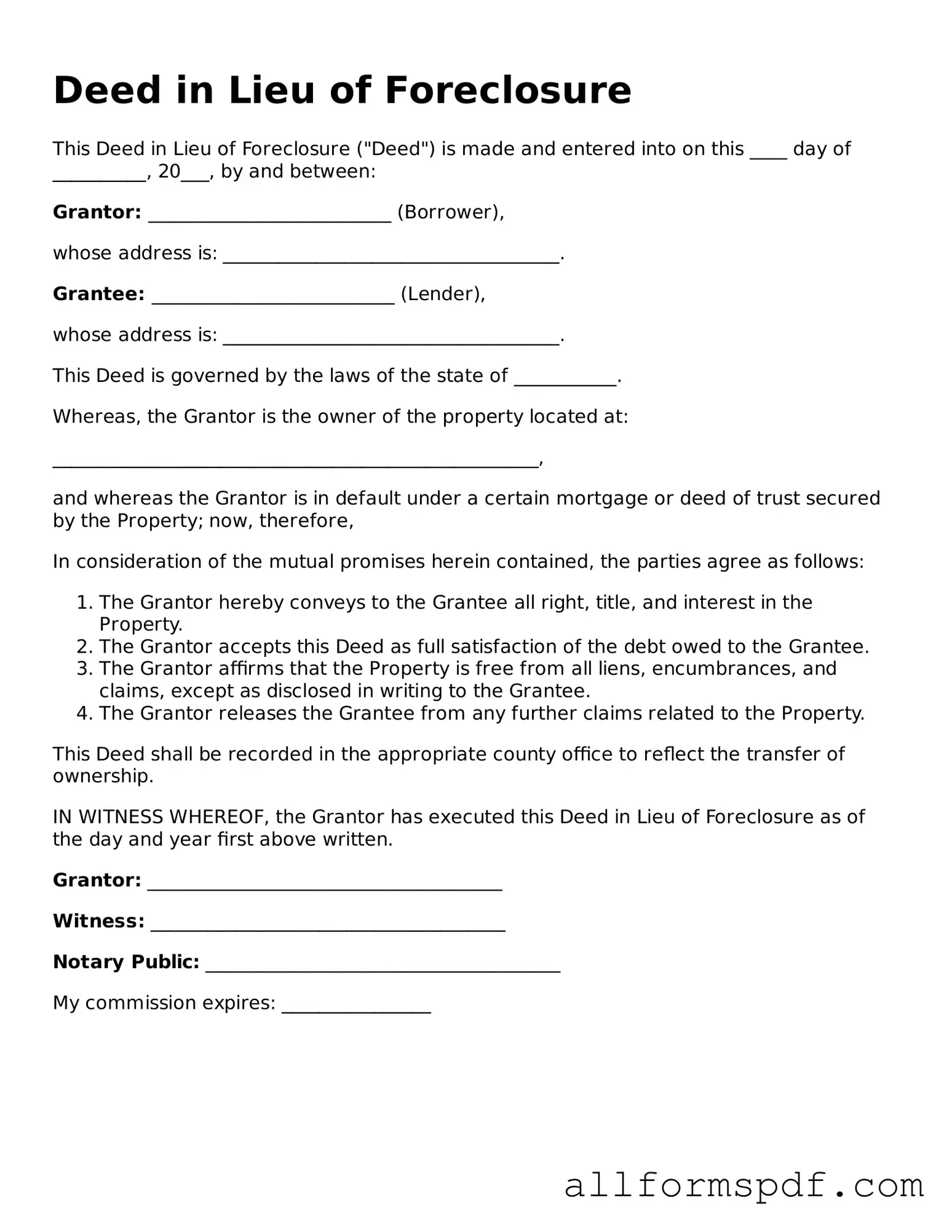Filling out a Deed in Lieu of Foreclosure form can be a complex process, and mistakes can lead to significant consequences. One common error is failing to provide accurate property information. When the property address or legal description is incorrect, it can create confusion and potentially invalidate the deed. It's essential to double-check these details before submission.
Another frequent mistake involves not obtaining the necessary signatures. All parties involved must sign the document for it to be legally binding. Omitting a signature can delay the process and complicate the transfer of ownership. Ensuring that all required individuals are present and ready to sign is crucial.
People often overlook the importance of including all relevant documents. A Deed in Lieu of Foreclosure typically requires additional paperwork, such as a letter from the lender or proof of ownership. Failing to attach these documents may result in rejection of the form or additional delays in the process.
Additionally, some individuals neglect to consult with a legal professional. This oversight can lead to misunderstandings about the implications of signing a Deed in Lieu of Foreclosure. Legal advice can provide clarity on the potential impacts on credit scores and future homeownership opportunities.
Misunderstanding the implications of the deed is another common mistake. Some people assume that this process absolves them of all financial obligations related to the mortgage. However, this is not always the case. It's important to understand that any remaining debt may still be pursued by the lender.
Another area where errors frequently occur is in the completion of the notary section. A notary public must witness the signing of the deed, and failure to have this step properly executed can render the document invalid. Ensuring that the notary is present and that all signatures are properly acknowledged is essential.
People sometimes rush through the process without fully understanding the terms of the agreement. Reading and comprehending the entire document is vital. Misinterpretations can lead to unintended consequences and can affect the homeowner's rights.
Additionally, some individuals do not keep copies of the submitted form and related documents. This can create difficulties if there are disputes or if the lender requires additional information later. Maintaining thorough records is a best practice in any legal process.
Finally, failing to communicate with the lender can lead to misunderstandings. It is advisable to maintain open lines of communication throughout the process. Lenders may have specific requirements or changes that need to be addressed, and staying informed is key to a smooth transaction.
